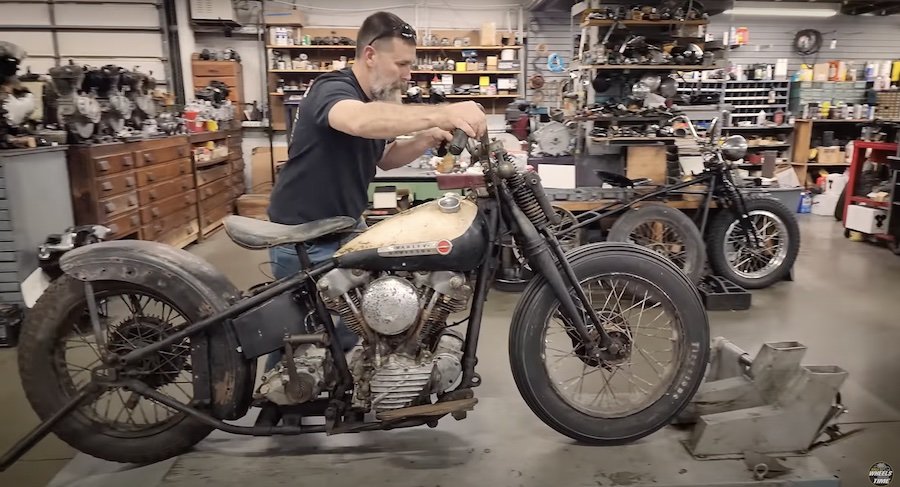Take A Look Inside A Rare 1942 Harley TT Engine With Wheels Through Time

What’s better than new bike day? Not much, if we’re honest—but one thing that comes close is watching Matt Walksler over at Dale’s Wheels Through Time Museum get his hands on some new-to-him piece of ultra-rare American motorcycle history. They’re probably some of the best unboxing videos you could ever hope to see because of two things: The excitement is genuine (and palpable), and the man’s vast realm of knowledge in his area of expertise is pretty much unbeatable.
In this video, Walksler dives into a 1942-ish Harley-Davidson TT racer that the Museum received about six months ago (so December 2022 or January 2023). At the time, 45 cubic inch race bikes were more standard, but he’s reasonably certain this is an ultra-rare 80 cubic inch version. The only way to find out is to take a dive straight inside the engine, though, so that’s exactly what he starts to do after a quick walk around the bike in its complete form.
On the outside, it’s clear that the engine cases are a bit dirty and grimy from the bike having sat for an unknown period of time. What’s on the outside doesn’t always indicate what’s on the inside, though, so that part will come in a little while. Racing features that Walksler notes right off the bat include a set of Flanders racing bars, a TT racing seat, and also a short oil tank for racing.
Why would you want a short oil tank? Depending on the length of the race, it might be just fine for the specific type of racing being done—and with a shorter (rather than taller) oil tank, there’s room to elevate the transmission higher up in the frame. That, Walksler says, allows for better ground clearance—and better cornering on something like a TT bike, where you’re going to be doing quite a bit of cornering.
After enlisting some help to get the engine out of the frame and onto the workbench, Walksler starts taking a look inside. The carburetor looks particularly stealthy, with no numbers on the outside (as though maybe they’ve been filed off). While Walksler says he’s looking forward to getting a look at the jets inside, that will have to wait for another day, because it’s on to noting the polished intake ports and how absolutely huge the intake valves are.
This machine used a chain-driven Wico magneto, which he takes the door off to show us. Delving deeper inside, it has polished connecting rods, ported cylinders, and shortened three-ring pistons. There’s easily about 3/8 of an inch removed from the height of these racing pistons over the stock units of the same time.
Everything inside the engine case, it seems, has been lightened in the interest of going faster. From lightened flywheels to gears with holes drilled out to add lightness (which Walksler illustrates by showing the solid, stock versions for comparison), the intended goal is easy to see. (It'd be interesting to see them weighed against each other off the bike for a clearer idea of exactly how much weight savings resulted.)
That’s especially true as someone looking at this stuff in 2023, but as Walksler points out, everyone involved in working on this bike was doing this stuff early on in the history of racing. They didn’t know what we know now, and while concepts might not have been brand new, they were still relatively early days, making it extra-fascinating to see.
Verwandte Nachrichten
